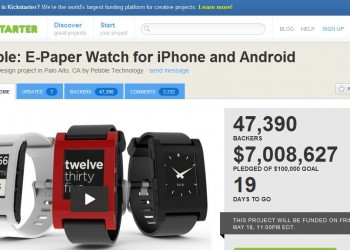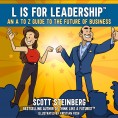Questions are good, as we like to say around here: Without asking them, it’s hard to get the answers you need. And given skyrocketing interest in crowdfunding, and the growing participation of industry celebrities, we can imagine that you’ve got more than a few you’d like to ask. Ironically, crowdfunding’s popularity may be outpacing the growth of educational resources, data, and best practices needed for crowdfunding campaigns to thrive. Here, we’ll attempt to answer several of the most common queries individuals and organizations have about the crowdfunding process:
Q: What are several common misconceptions about crowdfunding, Kickstarter, and the practice of raising funds online?
A: People hear about all the success stories, and don’t always realize that depsite the hype, crowdfunding is still a business. It’s one in which both the stakes, and consumer expectations, are quickly being raised. Far more projects fail than succeed…One of the best ways to help would include creating educational resources than can help people succeed, so that others learn from their experiences. The biggest windfalls here aren’t had only by those precious few projects that generate seven-figure pledge amounts or making the evening news, and/or those getting ready to make a killing, selling the miners proverbial proverbial picks and shovels.
Q: How should those seeking funds frame their pitch?
A: You need to be both compelling and authentic. You don’t have to have a professional or polished video, but lighting and audio have to be of sufficient quality. Short, snappy and to the point is always good.Also, keep in mind that someone needs to be the face of the movement. People need to be able to empathize with the individual in question. They are buying into you as much as the end concept. A lot of people are pitching concepts and ideas, but they are not putting out a lot of hard and fast business data. You are asking people to buy into your vision. You have to convince them why you are the right person for the job and, to that extent, you need to be believable and enthusiastic. And you don’t have to sound like someone in an infomercial. Be yourself. What we are talking about is people connecting to people to bring an idea to life.
Q: Should you create project samples and prototypes before launching a crowdfunding effort?
A: Certainly, crowdfunding campaigns can and have been successful pitching concepts and ideas. But whenever possible, you need to be able to show a tangible end product. You need to convince people you have the ability to pull off the idea you are trying to execute. You need to convince them of the project’s value and reassure them that their money is going to make a difference and the project is going to come to fruition. It’s one thing to ask someone to dip into their wallet for an idea that may or may not yet exist, but it’s another thing to say, “There is tangible, hard proof. You can see it running for yourself.”
Providing some reassurance that this is real will enhance your chances of success. It doesn’t have to be the finished product. It could be a minimum viable product, a sample. It doesn’t have to be super polished, but it absolutely, positively helps to have something to show.
Q: Any tips for individuals or organizations looking to market or promote on a tight budget?
A: Successful crowdfunding campaigns don’t necessarily have big advertising dollars. They capitalize on social media, they leverage communities and leverage traditional press channels as well. Before you begin, you need to identify key influencers. Those could be developers, community websites, press, Twitter personalities – whoever has a substantial following or impact with the audience your campaign targets. Find out where they live online and how to reach them. Think about how you can activate all of them to rally to your cause. You will also need to have specific inflection points when you make key announcements on new features and special rewards. You should stockpile information and announcements.
Q: Is crowdfunding best for certain types of businesses, brands or projects?
A: It’s best for businesses or projects with a strong consumer focus that can easily communicate their value proposition. Crowdfunding works for creative projects – apps, consumer products, software – that resonate with average, everyday people. What crowdfunding is not typically best for is something very technological in nature or B-to-B oriented.
Q: How do you know when crowdfunding is a better source of investment for your project than turning to traditional financing methods?
A: You have to be strategic because there’s no stealth mode. If you fail with a crowdfunding campaign, your brand and reputation will take a hit and you’re going to have a hell of a time going back to investors after that to convince them there’s a market for your service or product.
[Crowdfunding works best] if you’re not looking for a tremendous amount of capital, and that’s relative to your industry. $200K or $300K may be peanuts for an app or game maker. It’s good for projects that can be done affordably, that need to be done nimbly and for which it’s important that you retain creative control.
Often you only have a few seconds to clearly communicate your value proposition, so if you’re selling innovative tablet PCs or a revolutionary app, crowdfunding might work. If you’re selling a revolutionary inventory management system – well, that’s a hell of a lot drier. It comes down to a sales pitch. [Crowdfunding] investors are not as sophisticated as professional venture and angel investors. A product that can be easily and clearly communicated to a consumer stands a better chance.
Q: How can you craft a better pitch and presentation?
A: You’re getting backers to buy into the vision that what you’re doing is part of a larger movement. For example, with Double Fine Adventure, which raised $300K, the pitch wasn’t, “Hey, we’re making an adventure game.” The pitch was, “Adventure games are not dead. We’ve got legendary game designer Tim Schafer to create one. Let’s give the publishers a kick in the *** and show them the genre is alive and well.” For the cost of a latte, people could buy into a historic movement.
That sense of participation is what you’re looking to convey. Convince people there’s a reason your project deserves to be birthed into the world, what the benefits to them are, why the time to act is now or never, and how by doing so, they’ll directly play a part in making the world a better place.
Q: What are common mistakes that creators and entrepreneurs make when attempting to crowdfunding?
A: One is, “Hey, I’ll launch [the crowdfunding campaign] and that’s when the work stops.” Time and time again, I’ve seen campaigns launch to great fanfare and then fall off a cliff 48 hours later. It’s imperative prior to hitting the launch button that you’ve done your research, you’ve plotted a marketing campaign, you’ve got your social media tools lined up, you know who your audience is and how to reach them, and you have a working promotional plan for the entire duration of the campaign.
Brian Fargo, who created Wasteland 2 and [crowdfunded] nearly $3 million, said, “Our software development company all but stopped for three weeks so we could get our ducks in a row.” That’s what you’re competing with.
Do your homework and plan for as many eventualities as you can upfront. Study campaigns that have succeeded and campaigns that have failed. Know what resources you’re going to activate, and when and how you’re going to activate them. This could be video testimonials from noted industry personalities, or other brands, creators or influencers you can get a shout-out from on social media. Budget carefully and leave a 30% cushion. Set your funding goals carefully – ask for just what you need, because the more realistic the funding goal, the more attainable it seems to everyday users and the more likely they are to contribute.
Crowdfunding is a marathon, not a sprint. Often [entrepreneurs] don’t understand the time commitment involved. Every day you’re going to be working the phones, working Twitter, doing outreach, talking to media. It’s incredibly taxing, but at the end it may be incredibly rewarding as well.
Questions are good, as we like to say around here: Without asking them, it’s hard to get the answers you need. And given skyrocketing interest in crowdfunding, and the growing participation of industry celebrities such as Spike Lee, we can imagine that you’ve got more than a few you’d like to ask. Ironically, crowdfunding’s popularity may be outpacing the growth of educational resources, data, and best practices needed for crowdfunding campaigns to thrive. Here, we’ll attempt to answer several of the most common queries individuals and organizations have about the crowdfunding process:
Q: What are several common misconceptions about crowdfunding, Kickstarter, and the practice of raising funds online?
A: People hear about all the success stories, and don’t always realize that depsite the hype, crowdfunding is still a business. It’s one in which both the stakes, and consumer expectations, are quickly being raised. Far more projects fail than succeed…One of the best ways to help would include creating educational resources than can help people succeed, so that others learn from their experiences. The biggest windfalls here aren’t had only by those precious few projects that generate seven-figure pledge amounts or making the evening news, and/or those getting ready to make a killing, selling the miners proverbial proverbial picks and shovels.
Q: How should those seeking funds frame their pitch?
A: You need to be both compelling and authentic. You don’t have to have a professional or polished video, but lighting and audio have to be of sufficient quality. Short, snappy and to the point is always good.Also, keep in mind that someone needs to be the face of the movement. People need to be able to empathize with the individual in question. They are buying into you as much as the end concept. A lot of people are pitching concepts and ideas, but they are not putting out a lot of hard and fast business data. You are asking people to buy into your vision. You have to convince them why you are the right person for the job and, to that extent, you need to be believable and enthusiastic. And you don’t have to sound like someone in an infomercial. Be yourself. What we are talking about is people connecting to people to bring an idea to life.
Q: Should you create project samples and prototypes before launching a crowdfunding effort?
A: Certainly, crowdfunding campaigns can and have been successful pitching concepts and ideas. But whenever possible, you need to be able to show a tangible end product. You need to convince people you have the ability to pull off the idea you are trying to execute. You need to convince them of the project’s value and reassure them that their money is going to make a difference and the project is going to come to fruition. It’s one thing to ask someone to dip into their wallet for an idea that may or may not yet exist, but it’s another thing to say, “There is tangible, hard proof. You can see it running for yourself.”
Providing some reassurance that this is real will enhance your chances of success. It doesn’t have to be the finished product. It could be a minimum viable product, a sample. It doesn’t have to be super polished, but it absolutely, positively helps to have something to show.
Q: Any tips for individuals or organizations looking to market or promote on a tight budget?
A: Successful crowdfunding campaigns don’t necessarily have big advertising dollars. They capitalize on social media, they leverage communities and leverage traditional press channels as well. Before you begin, you need to identify key influencers. Those could be developers, community websites, press, Twitter personalities – whoever has a substantial following or impact with the audience your campaign targets. Find out where they live online and how to reach them. Think about how you can activate all of them to rally to your cause. You will also need to have specific inflection points when you make key announcements on new features and special rewards. You should stockpile information and announcements.
Q: Is crowdfunding best for certain types of businesses, brands or projects?
A: It’s best for businesses or projects with a strong consumer focus that can easily communicate their value proposition. Crowdfunding works for creative projects – apps, consumer products, software – that resonate with average, everyday people.
What crowdfunding is not typically best for is something very technological in nature or B-to-B oriented. The biggest successes have been galvanized around consumer-facing products like [the Pebble smartwatch] or the [Double Fine] Adventure game… something there’s tremendous demand for. Ultimately, you’re trying to reach either as broad an audience as possible, or a very loyal and passionate [niche] audience of fans.
Q: How do you know when crowdfunding is a better source of investment for your project than turning to traditional financing methods?
A: You have to be strategic because there’s no stealth mode. If you fail with a crowdfunding campaign, your brand and reputation will take a hit and you’re going to have a hell of a time going back to investors after that to convince them there’s a market for your service or product.
[Crowdfunding works best] if you’re not looking for a tremendous amount of capital, and that’s relative to your industry. $200K or $300K may be peanuts for an app or game maker. It’s good for projects that can be done affordably, that need to be done nimbly and for which it’s important that you retain creative control.
Often you only have a few seconds to clearly communicate your value proposition, so if you’re selling innovative tablet PCs or a revolutionary app, crowdfunding might work. If you’re selling a revolutionary inventory management system – well, that’s a hell of a lot drier. It comes down to a sales pitch. [Crowdfunding] investors are not as sophisticated as professional venture and angel investors. A product that can be easily and clearly communicated to a consumer stands a better chance.
Q: How can you craft a better pitch and presentation?
A: You’re getting backers to buy into the vision that what you’re doing is part of a larger movement. For example, with Double Fine Adventure, which raised $300K, the pitch wasn’t, “Hey, we’re making an adventure game.” The pitch was, “Adventure games are not dead. We’ve got legendary game designer Tim Schafer to create one. Let’s give the publishers a kick in the *** and show them the genre is alive and well.” For the cost of a latte, people could buy into a historic movement.
That sense of participation is what you’re looking to convey. Convince people there’s a reason your project deserves to be birthed into the world, what the benefits to them are, why the time to act is now or never, and how by doing so, they’ll directly play a part in making the world a better place.
Q: What are common mistakes that creators and entrepreneurs make when attempting to crowdfunding?
A: One is, “Hey, I’ll launch [the crowdfunding campaign] and that’s when the work stops.” Time and time again, I’ve seen campaigns launch to great fanfare and then fall off a cliff 48 hours later. It’s imperative prior to hitting the launch button that you’ve done your research, you’ve plotted a marketing campaign, you’ve got your social media tools lined up, you know who your audience is and how to reach them, and you have a working promotional plan for the entire duration of the campaign.
Brian Fargo, who created Wasteland 2 and [crowdfunded] nearly $3 million, said, “Our software development company all but stopped for three weeks so we could get our ducks in a row.” That’s what you’re competing with.
Do your homework and plan for as many eventualities as you can upfront. Study campaigns that have succeeded and campaigns that have failed. Know what resources you’re going to activate, and when and how you’re going to activate them. This could be video testimonials from noted industry personalities, or other brands, creators or influencers you can get a shout-out from on social media. Budget carefully and leave a 30% cushion. Set your funding goals carefully – ask for just what you need, because the more realistic the funding goal, the more attainable it seems to everyday users and the more likely they are to contribute.
Crowdfunding is a marathon, not a sprint. Often [entrepreneurs] don’t understand the time commitment involved. Every day you’re going to be working the phones, working Twitter, doing outreach, talking to media. It’s incredibly taxing, but at the end it may be incredibly rewarding as well.
Q: How long should your crowdfunding campaign run?
A: Thirty days seems to be the magic number. You need time to see what’s resonating and fix what’s broken. Maybe your rewards or your creative campaign aren’t resonating. You need to be able to adapt on a dime. You need a game plan, but you also need to realize that no good plan survives first contact with the enemy.
Q: What should you do if you launch a campaign and it doesn’t resonate, or falls short of expectation?
A: Talk to your backers. Get their impressions. Nobody wants to see you succeed more than they do. Remember, you have the ability to change much of it on the fly. If your messaging doesn’t connect or your rewards don’t connect, you can always tweak it. If your video isn’t resonating or people keep asking questions about your pitch, post updates to answer the questions, or do outreach through email newsletters.
Think of your campaign as a series of battles in an ongoing war. It’s important to know upfront who you can call on for support, because you’re going to need to lean on your backers, partners, and friends and family.
Q: What types of rewards should I be providing?
A: You need a combination of physical merchandise or preorders and personalized, one-of-a-kind rewards, such as advance access to a beta program. It’s important to offer value at every level. This isn’t a charity fundraiser; people expect something in return for their money. Start at the impulse buy level – $5 or so – and go up to high-end, exclusive prizes. Have reasonably spaced-out [reward] tiers – don’t jump from $5 to $500 – so everyone has a chance to contribute. Have a mix of rewards, some designed to draw attention to your campaign or attract the big fish, and some designed to monetize. It’s also a good idea to introduce new rewards throughout your campaign.
Q: After my project is funded, what steps should I be taking?
A: You need to thank [your contributors] profusely. These people are engaged customers and your most ardent supporters and brand evangelists. Embrace them and stay in constant contact. Not only are they likely to help you spread the word, but many times they’ll also offer to contribute [to your business in other ways].
The beauty of crowdfunding is it allows you to connect with your target audience from Day One, better engage them and create empathy. In many ways this is the holy grail of marketing – [customers are] emotionally invested in the outcome, personally interested and want to see you succeed. So half your branding and awareness battle has already been fought.
Q: How do you suspect that the JOBS Act is going to impact the world of crowdfunding?
A: I think it’s going to catalyze even more interest, and we’ll see more small and midsized businesses in the traditional space turning to crowdfunding as a viable alternative.
On sites like Kickstarter, IndieGoGo and RocketHub, not everything is designed to be a money-making enterprise. [Thanks to the JOBS Act, crowdfunding will attract] sophisticated startups looking to pitch more viable business strategies. And everyday individuals, instead of putting their money in the stock market, will be looking for [startups] that will deliver sustainable business models and maximum ROI.
Q: What are some of your favorite examples businesses and creators using crowdfunding to positive effect?
A: gTar is a new and novel startup with an iPhone-powered digital guitar. [It shows] how effective crowdfunding can be when you have an eye-catching, unique offering that makes an impression very quickly.
But by far the best crowdfunding campaign I’ve seen so far is not a tech startup. Amanda Palmer is a musician who wanted to raise $100K for a new CD, tour and book. She has a three-minute video where she doesn’t say a word, just holds up poster board with writing on it, smiles and waves and utterly charms you. She’s already raised $800K.
A: Is Kickstarter the silver bullet or solution businesses and entrepreneurs have been waiting for in terms of financing?
A: Kickstarter is just one of many solutions. Assuming that you are not going to try to raise crowdsourced funds directly on your own, or use a custom fundraising platform such as Slightly Mad’s World of Mass Development, you will probably be turning to one of the following solutions. Keep in mind that platforms are not all the same in terms of feature set, audience size, credibility with consumers, and ultimate reach. Some may focus on specific types of projects, such as local or humanitarian efforts, while others are better suited to high-tech ventures (e.g. software programs or console video games). For example, Spot.us is about collaborative journalism, not products. So while you have several choices here when picking a funding source, it’s advisable that you take time to check each out and decide which fits your needs best.
1. Kickstarter
2. IndieGogo
3. Spacehive
4. RocketHub
5. Ulule
6. 33Needs
8. Crowdcube
9. Peerbackers
10. Grow VC
11. 8-Bit Funding
Q: What’s the risk of fraud when investing in crowdfunding projects?
A: We’re just now starting to see fraudulent activity pop up on Kickstarter and similar sites – I expect we’ll see even more now that companies will soon legally be able to use crowdfunding to raise limited equity investments as well. That said, be careful when consider donating to projects, look for telltale signs that a. projects/creators may seem sketchy and b. the scope or ambition of a venture may be too large to realize. Very little regulation is happening in the space, and few laws cover it, or what happens should a project fail to materialize or provide all features promised. As a rule of thumb, remember: If it sounds too good to be true…
Q: What’s next for crowdfunding?
Expect a tidal wave of investment solutions and services that offer a variety of investment opportunities that leverage a wealth of differing business models and target equally many interests– and expect that the field is about to explode. Not only will we see more crowdfunding websites and tools on the back of breakout successes like the Oculus Rift and Project Eternity, and the JOBS Act’s enactment in the US. We’ll also soon seen a variety of new and exciting alternative models to venture capital and angel investment, as we’re at the beginning of a new era for community- and consumer-based fundraising, and options are seemingly endless. That said, don’t expect traditional solutions like VC firms to go away either – their clout, reach and capital remain powerful assets.














